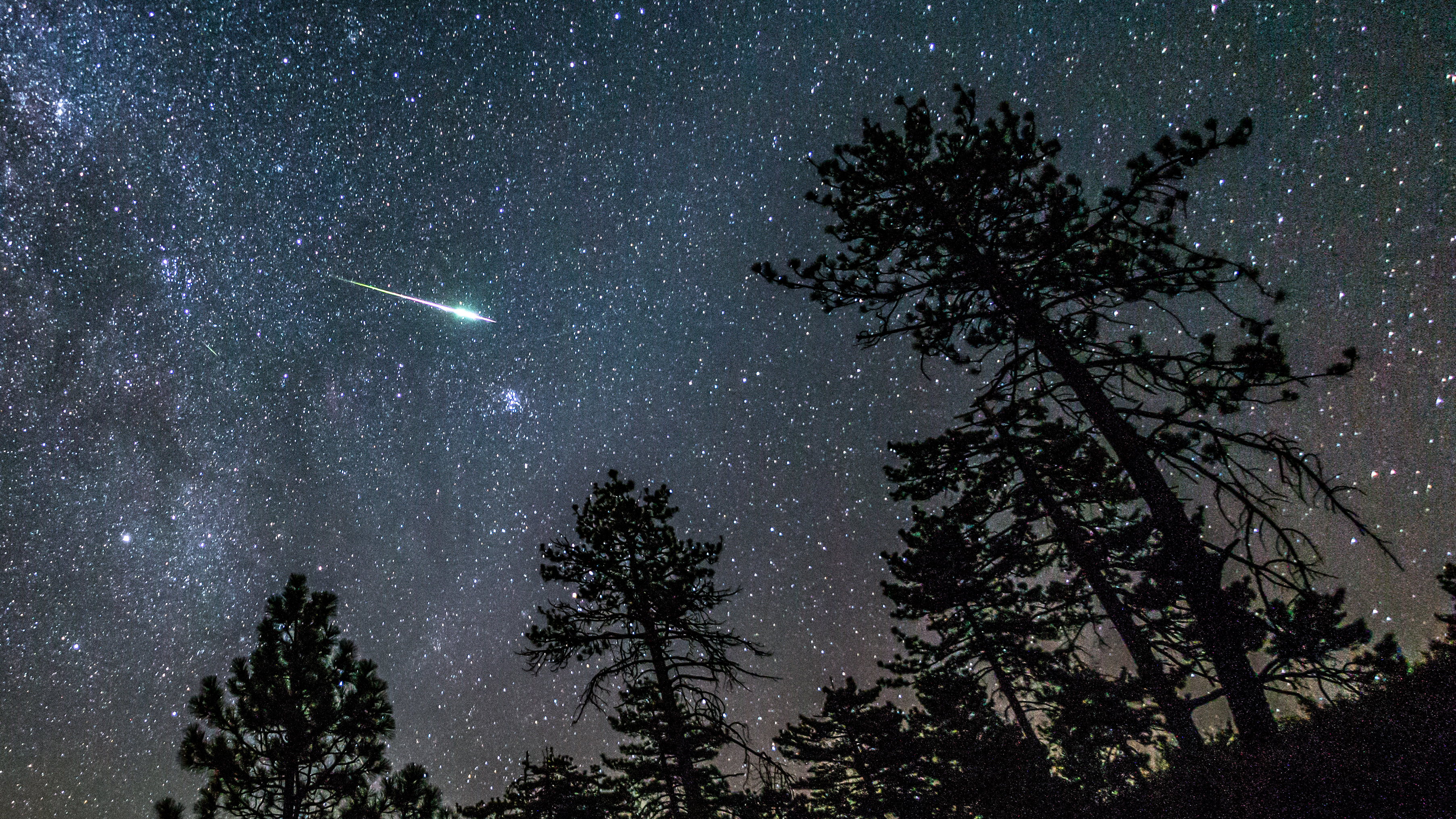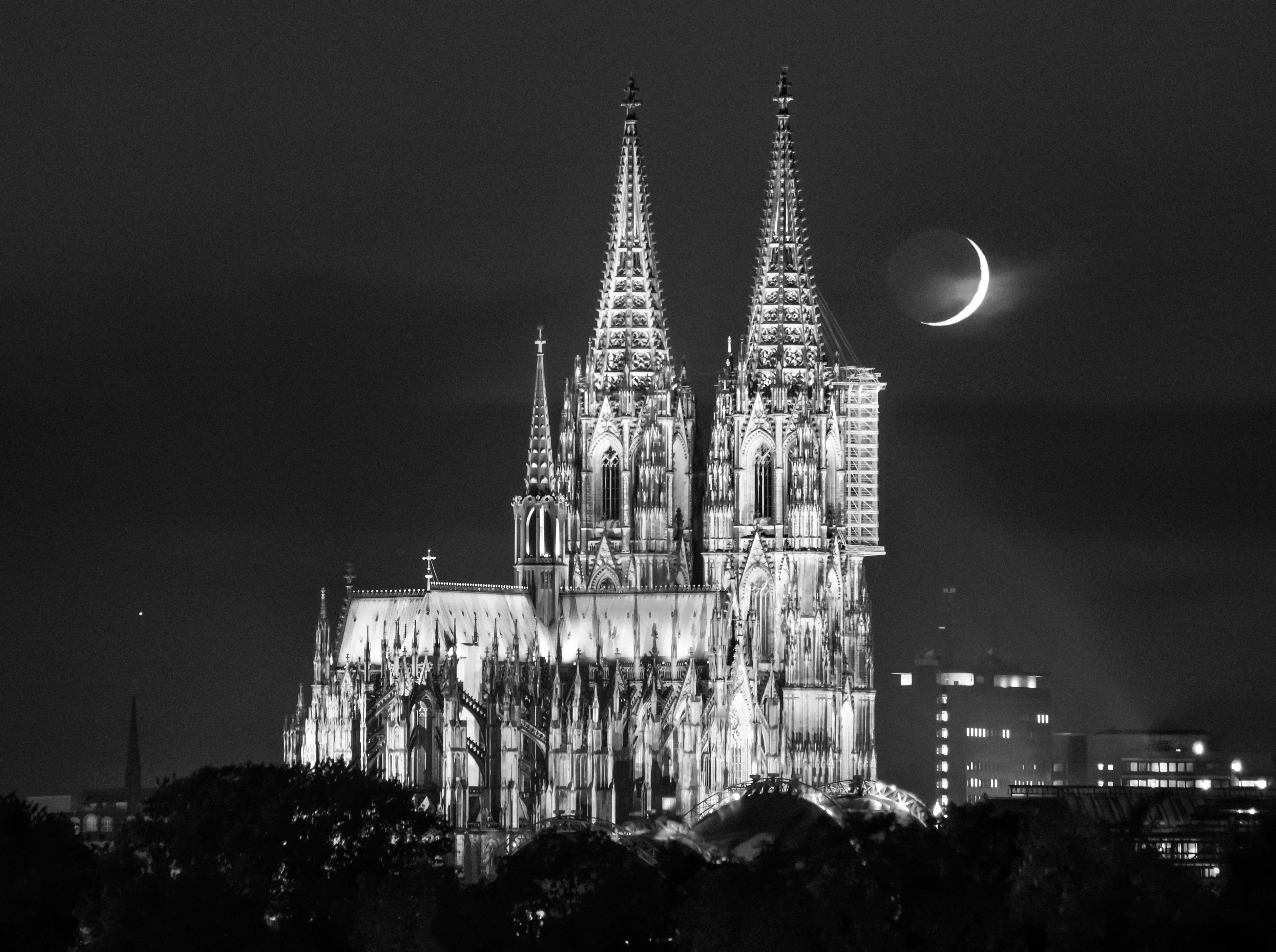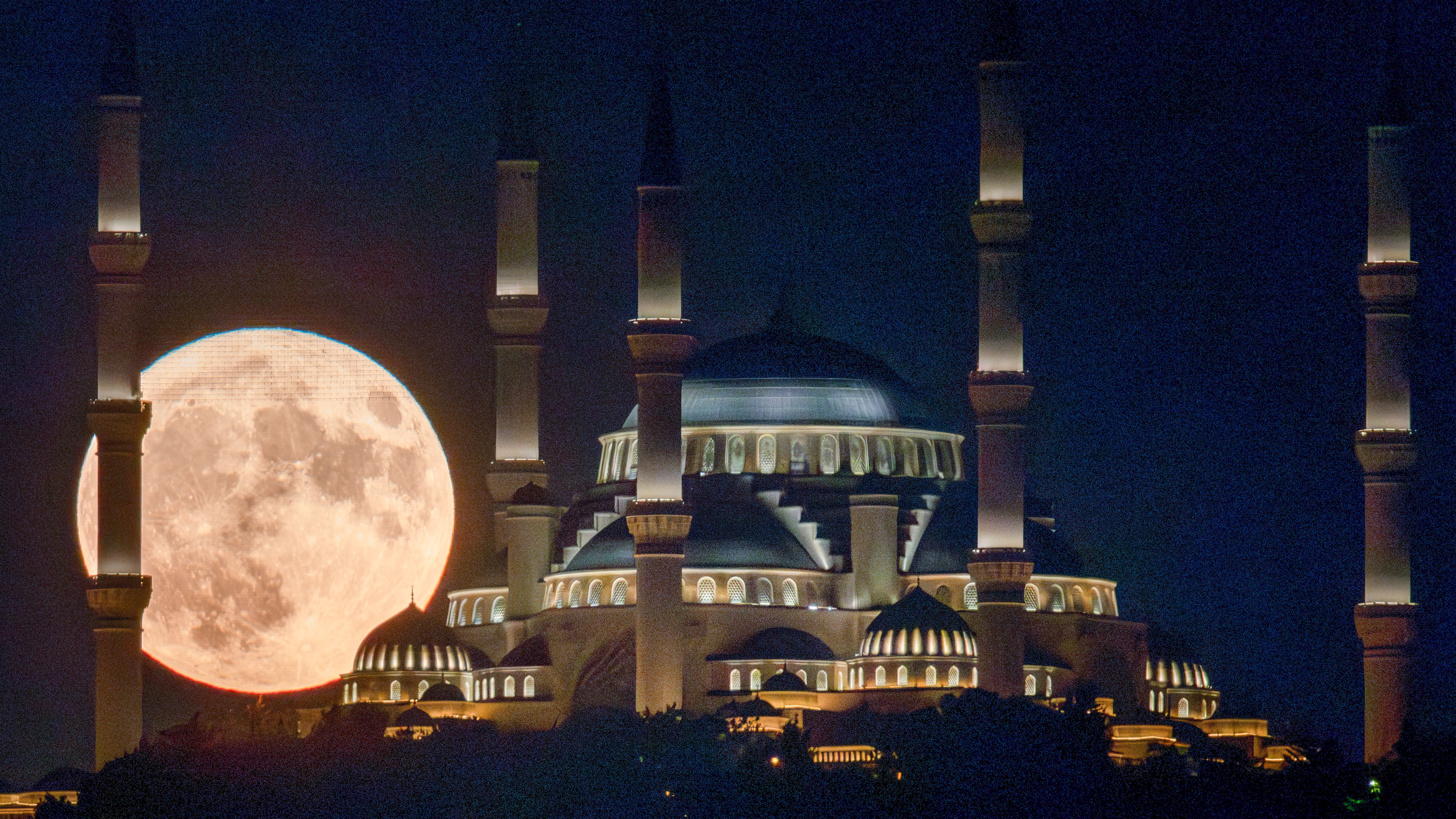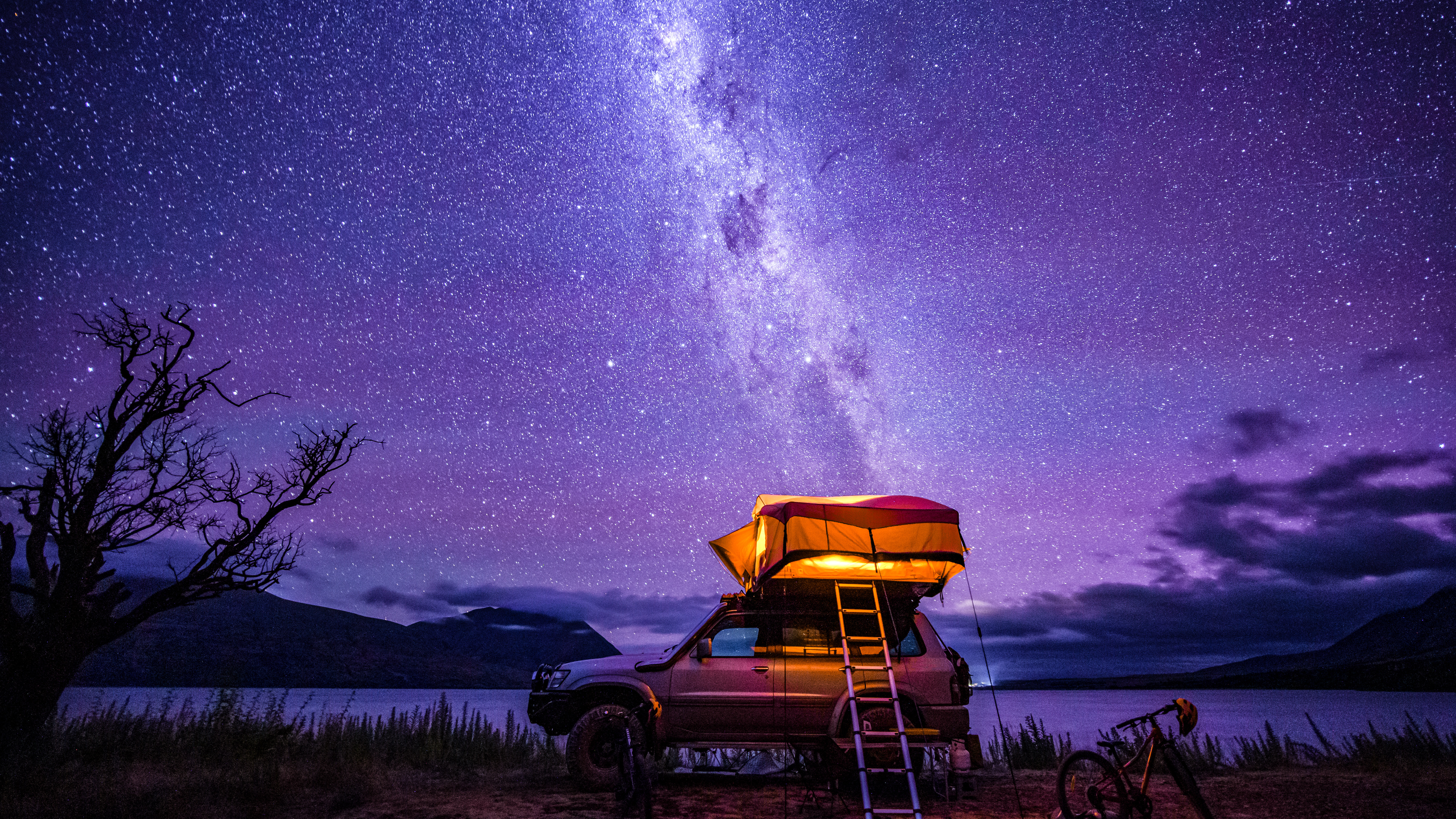
Here comes a month of excellent variety for astrophotographers. The undoubted highlight of the month will be the peak of the Perseid meteor shower, but it’s far from the only awe-inspiring sky event in August. Mars and Jupiter will be in a particularly close conjunction, the moon will occult a bright Saturn and, a few nights later, pass close to the stars of the beautiful Pleiades open cluster.
Meanwhile, with more hours of darkness than in June and July, images of the Milky Way are possible as soon as it gets dark and, just perhaps, the aurora borealis as our star waxes towards its “solar maximum.” Here’s everything you need to know about astrophotography in August 2024:
Sunday, 28 July-Sunday, 4 August: Dark sky window opens
The night skies are darkest when the moon is down, which this month means between 28 July’s last quarter moon and 4 August’s new moon. At this time of year, consult sunset and sunrise times where you are so you know exactly what to expect. A crescent moon will set early the few nights after the new moon, so the “dark sky window” effectively stretches for another three or so nights.
Read: The best cameras for astrophotography
Monday-Thursday, 5-8 August: The crescent moon

Fabulous images of a delicate crescent moon on the western horizon as twilight deepens can be had every month, and are staples of astrophotography. Point your camera to the northwest about 20 minutes after sunset, where you are on August 5 to catch a razor-thin crescent moon (with Venus close by). On each of the following three nights, there will be easier chances to find and photograph the crescent moon as it waxes towards its first quarter phase.
Read: When to photograph the moon.
Monday-Tuesday, August 11-12: Perseid meteor shower peaks
Be outside at midnight to see as many as 60 “shooting stars” per hour as the annual Perseids peak. This popular and prolific display of meteors (grains of sand left by comets striking Earth’s atmosphere) has a wide peak of about 16 hours, so anytime after dark is a good time to set up your camera. However, it’s not until the shower’s radiant constellation, Perseus, is high in the sky that rates will be maximized. That’s around midnight when a crescent moon will have sunk into the western horizon.
Thursday, August 15: Jupiter and Mars in conjunction
All planets orbit the sun along the same plane at different speeds, so they frequently appear to pass close to each other, as seen from Earth. However, it’s relatively rare for the major bright planets to do so. In the early hours of today, Jupiter and Mars will appear a mere 20 arcminutes apart, though the “giant planet” will be much brighter than the “red planet.”
Read: The best lenses for astrophotography
Monday, August 19: A full ‘supermoon’

August’s full moon will be hyped, not only because it’s a slightly larger-than-on-average “supermoon” – the first of four in 2024 – but also because it’s a “blue moon.” The former is, for photographers, largely inconsequential, and the latter is simply a quirk of the calendar; a “blue moon” in this case, is the third of four full moons in one astronomical season, which is a relatively rare but uninteresting occurrence. Don’t let any of that put you off because the full moon's rise is always one of the monthly highlights for astrophotographers. August’s full moon is known as the “Sturgeon Moon,” the “Lightning Moon” and the “Lynx Moon.” Check the moonrise/moonset times for your location.
Read: How to photograph the full moon
Tuesday, August 20: Moon and Saturn in conjunction
The “ringed planet” will be in opposition in early September when Earth is roughly between it and the sun. That makes it closer and seem bigger and brighter in the sky than at any other time of the year. As a preview to that, Saturn will tonight be visited by a waning gibbous moon against the background stars of the constellation Aquarius.
Monday, August 26: Moon and the Pleiades
The Pleiades – also known as the Seven Sisters – is the closest cluster of stars to the solar system, at about 444 light-years distant. What’s special about them is that they appear a diffuse blue color, with starlight reflecting on clouds of dust and gas between them. Every night is a chance to photograph the Pleiades, but in the early hours of today, a last-quarter moon will pass so closely by that both objects will appear in the same field of view of a telescope.
Read: The best star tracker camera mounts
August 26 - September 3: Dark sky window opens
The month closes with the opening of another “darks window,” which stretches from 26 August’s last quarter moon past September 3’s new moon. This is the ideal time to photograph the Milky Way or indulge in deep-sky astrophotography. Consult the sunset and sunrise times for where you are.
Read: Astrophotography: How-to guides, tips and videos.
Astrophotography shot of the month: the Milky Way

August is a fine month for imaging the Milky Way, but you do need to make a plan. The good news is that our galaxy will be visible almost as soon as it gets dark, streaming through the famous “Summer Triangle” of three stars – Vega, Deneb and Altair – rising in the east. The bad news is that to get any kind of view, or image, of the light of 100 billion stars will likely mean traveling away from light pollution to dark skies. Anywhere that looks dark on a light pollution map is fine, though a good shortcut is to find yourself a campsite or RV reservation in an International Dark Sky Place. Timing is everything; there’s little point in driving to find dark skies if the moon is full or about to be. Instead, choose August’s dark sky windows – 28 July-4 August and 26 August-3 September – to make the most of a moonless night sky.
You're ready to compose your galactic shots once you’re in the right place at the right time – and the skies are clear. With a camera and a wide-angle lens (14mm-18mm) on a tripod, the latter, on infinity focus, orient to the southeast and experiment with manual settings. ISO 800, f1.8-f4, and 25 seconds are good places to start. What looks best depends on how fast your lens is and how much ISO your camera can cope with (owners of newer cameras can comp template shorter exposures and very high ISO). Always shoot raw, use post-processing to highlight the color and detail, and always put something interesting in the foreground.
Read more:







